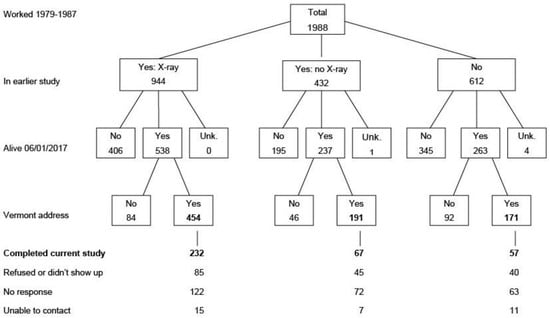The current study is a long-term follow-up of a cohort of Vermont granite workers who were working in the industry at some time during 1979–1987, and most of their exposure levels ranged from 0.01–0.10 mg/m3 of respirable crystalline silica. Some of the workers participated in the 1983 radiographic study and their prior radiographic findings were available to assess the progression of any classifiable lung abnormalities found at that time. The goal of this study was to obtain direct evidence about the lifetime risk of silicosis among workers with lengthy exposure to respirable crystalline silica at levels ≤ 0.10 mg/m3
This study provides direct evidence that granite workers with long-term exposure to ≤0.10 mg/m3 respirable crystalline silica are at risk of developing silicosis, particularly if they are employed as stone cutters and carvers.
Although many of the detected cases had simple silicosis with a profusion category of 1 or 2, corresponding to low or moderate radiographic severity, they had an increased prevalence of dyspnea compared to workers with similar smoking histories and no classifiable parenchymal abnormalities.
These results reinforce the importance of regulating and monitoring occupational exposure to respirable crystalline silica and justify the periodic radiographic screening of all exposed employees to identify early parenchymal changes indicative of silicosis.


